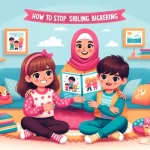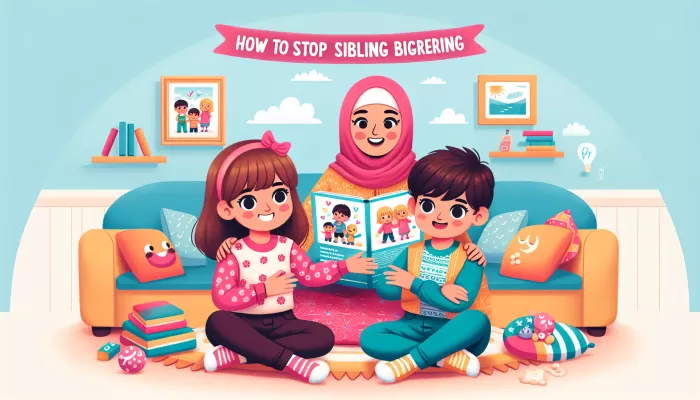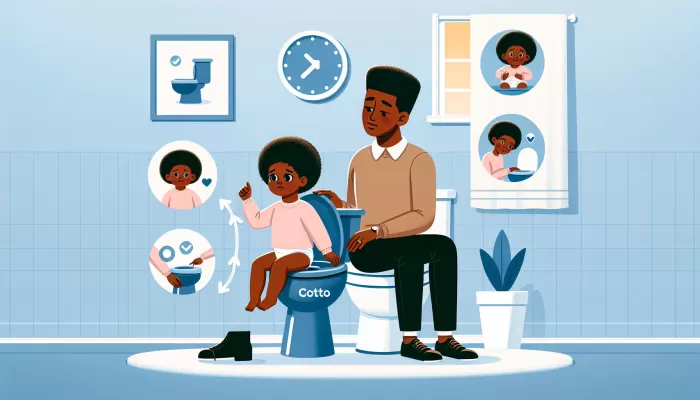Toy Poodles shedding tendencies
Shedding is a natural process that occurs in most dog breeds, involving the loss of old or damaged hair to make way for new growth. However, not all dogs shed to the same extent.
Shedding patterns can vary widely depending on factors such as breed genetics, health conditions, environmental factors, and even hormonal changes. In general, dogs with single-layered coats or hair-like fur tend to shed less compared to those with double-layered or thick-coated breeds.
While some dogs have minimal shedding due to specific genetic traits that cause hair to consistently grow instead of falling out (such as with certain hypoallergenic breeds), others may experience more substantial shedding due to various factors influencing coat growth cycles. To understand why Toy Poodles shed or have minimal shedding tendencies relative to other breeds, we need to explore both their unique characteristics as a breed and how shedding operates in dogs overall.
Coat of a Toy Poodle
Toy Poodle’s Hypoallergenic Coat
The Toy Poodle, known for its adorable appearance and charming personality, possesses a unique coat that distinguishes it from other dog breeds. One notable characteristic of the Toy Poodle’s coat is its hypoallergenic nature. This term refers to the low likelihood of triggering allergic reactions in individuals who are sensitive to pet dander.
The hypoallergenic quality of the Toy Poodle’s coat stems from its composition and texture. Unlike many other breeds, which have fur-like coats, Toy Poodles have hair-like coats that more closely resemble human hair.
This distinction is crucial because it significantly reduces shedding and minimizes the release of allergens into the environment. Furthermore, another remarkable attribute of the Toy Poodle’s hypoallergenic coat is its lack of an undercoat.
The absence of an undercoat means that there are fewer loose hairs to shed. Consequently, fewer allergens become airborne or linger on furniture and carpets, providing relief to those prone to allergies.
Different Types of Coats in Toy Poodles
Toy Poodles exhibit various types of coats that contribute to their overall charm and allure. These coat variations can be broadly classified into four categories: curly, corded, wavy, and straight.
1. Curly Coats:
The curly coat type is perhaps what most people envision when they think about a classic poodle appearance. The tightly curled strands create a distinctive style often associated with elegance and sophistication. The curls are compact and dense throughout the entire body.
2. Corded Coats:
Corded coats are truly unique and give Toy Poodles a strikingly different look. Over time, the curly locks form long cords that resemble dreadlocks. This type of coat requires meticulous care to maintain its distinctive appearance.
3. Wavy Coats:
Wavy coats display a more relaxed texture, with gentle waves flowing throughout the fur. While not as tightly curled as the curly coat, they still retain an elegant appearance with soft undulations.
4. Straight Coats:
Straight coats are less common in Toy Poodles but can still occur occasionally. These coats lack the curls or waves found in other types and tend to be smooth and sleek. The diversity of coat types among Toy Poodles allows for personal preferences in terms of appearance and grooming styles. Each type has its own unique beauty, making Toy Poodles a versatile breed when it comes to selecting a specific coat variation that appeals to individual tastes.
Factors influencing shedding in Toy Poodles
Genetics and hereditary traits
The shedding tendencies of a Toy Poodle are strongly influenced by genetics and hereditary traits. Just like humans inherit certain physical characteristics from their parents, dogs also inherit specific genes that impact their coat texture and shedding frequency.
However, it is important to note that not all Toy Poodles will shed equally due to genetic variations within the breed. No content provided.
Hormonal changes and health conditions
In addition to genetics, hormonal changes can significantly impact the shedding patterns of Toy Poodles. Hormones play a crucial role in regulating various bodily functions, including hair growth and shedding cycles.
Fluctuations in hormone levels can lead to changes in the rate of hair loss. Furthermore, certain health conditions can also contribute to excessive shedding in Toy Poodles.
For instance, conditions such as thyroid imbalances or allergies may trigger abnormal hair loss or increased shedding. It is essential for owners to monitor their dog’s overall health and consult with a veterinarian if they notice any unusual patterns of shedding.
Shedding Patterns in Different Stages of a Toy Poodle’s Life
Shedding During Puppyhood: Overview of the Initial Development and Growth Stages
As adorable as Toy Poodle puppies are with their fluffy and soft coats, it is important to note that shedding is still a part of their growing process. During this stage, the puppy’s coat undergoes significant changes as they transition into adulthood.
Understanding these stages can help pet owners manage shedding effectively. Puppyhood is characterized by rapid growth and development both physically and emotionally.
At around four weeks old, Toy Poodle puppies start to shed their initial coat, known as the “puppy coat.” This process is necessary for the growth of their adult fur, which will eventually become more dense, curly or wavy depending on their specific genetics. The shedding during this stage may appear more noticeable due to the contrast between the soft puppy fur and emerging adult hair.
Explanation on How Puppy Fur Transitions into Adult Coat
The transition from puppy fur to adult coat in Toy Poodles is a fascinating process that showcases nature’s marvels. As the puppy grows older, typically between four to six months of age, the soft puppy fur gradually gives way to a new coat that reflects their future appearance. This transition occurs under hormonal influences that trigger changes in hair follicles.
The texture and coloration of the adult coat begin to emerge at this stage. For instance, if your Toy Poodle is destined to have tight curls or waves, you may start noticing these characteristics becoming more pronounced during this maturation phase.
Shedding During Adulthood: Discussion on Regular Maintenance Required for Managing Shed Hair
Once your Toy Poodle reaches adulthood (around one year old), shedding tendencies usually stabilize. However, it’s essential to note that Toy Poodles are not considered heavy shedders compared to many other breeds. Their coat is often described as hypoallergenic, which means they produce fewer allergenic particles and are suitable for individuals with allergies.
While shedding during adulthood may be minimal, regular maintenance is still necessary to keep your Toy Poodle’s coat in optimal condition. This includes brushing sessions to remove loose hair and prevent matting or tangling.
Depending on the specific texture of their adult coat, various brushes may be recommended, such as slicker brushes or pin brushes. Additionally, professional grooming appointments can further aid in managing shed hair by ensuring a thorough cleaning and trim.
Effective Grooming Techniques to Minimize Shedding in Toy Poodles
Proper Brushing Routine for Reducing Loose Hairs
Grooming plays a crucial role in managing shedding in Toy Poodles. Establishing a regular brushing routine is essential to reduce loose hairs and maintain the cleanliness and health of their coat.
Ideally, you should brush your Toy Poodle at least three times a week, if not daily, depending on the density and length of their fur. Start by gently combing through the hair with a wide-toothed comb to remove any tangles or mats.
This will help prevent further hair breakage while brushing. Once the coat is free of tangles, use a slicker brush or a pin brush specifically designed for long-haired dogs.
Explanation on Suitable Brushes for Different Coat Types
The choice of brush depends on the type of coat your Toy Poodle has. For those with curly or wool-like coats, slicker brushes work best as they can penetrate through dense curls without causing discomfort. On the other hand, if your Toy Poodle has wavy or straight hair, a pin brush would be more suitable as it can reach deeper into the coat without pulling on individual strands.
It’s crucial to invest in high-quality brushes that are gentle yet effective in removing loose hairs and preventing matting. Look for brushes with flexible bristles that won’t scratch your dog’s skin but are still able to catch loose hair effectively.
Tips for Effective Brushing Sessions
To make brushing sessions more pleasant and productive, create a calm and comfortable environment for your Toy Poodle. Find a quiet area where both you and your dog can relax during grooming sessions. Start by rewarding your Toy Poodle with treats and gentle praise to associate brushing with positive experiences.
Be patient and take breaks if needed, especially if your dog becomes restless. This will help ensure that the grooming experience remains enjoyable for both of you.
Regular Professional Grooming Appointments
While regular at-home brushing is crucial, professional grooming appointments are equally important for managing shed hair in Toy Poodles. Professional groomers have the expertise to handle various coat types and can perform a thorough stripping or trimming, which helps to remove dead hair more effectively.
During these appointments, groomers also provide additional services such as ear cleaning, nail trimming, and anal gland expression ¡ª all of which contribute to maintaining your Toy Poodle’s overall health and well-being. Additionally, groomers can identify any potential skin issues or abnormalities that may be causing excessive shedding.
Importance of Professional Grooming for Managing Shed Hair
Toy Poodles have a unique coat that requires professional attention to keep it healthy and free from mats or tangles. Regular visits to a professional groomer not only help manage excessive shedding but also promote good hygiene practices.
Groomers are skilled in using specialized tools and techniques that allow them to effectively remove loose hairs without causing discomfort or damaging the coat. They can also provide guidance on proper at-home maintenance, recommend suitable grooming products specific to your Toy Poodle’s needs, and offer personalized advice on managing shedding issues.
Recommended Frequency for Grooming Visits
The frequency of professional grooming visits depends on several factors including your Toy Poodle’s coat length, density, activity level, and individual needs. As a general guideline, it is recommended to schedule a grooming appointment every four to six weeks.
This timeframe ensures that the coat remains well-maintained and helps prevent excessive shedding caused by matting or tangled hair. However, it’s important to consult with your groomer to establish a grooming schedule tailored to your Toy Poodle’s specific requirements.
Dietary considerations to reduce excessive shedding
Impact of nutrition on a dog’s coat quality
The diet of a Toy Poodle plays a significant role in maintaining the quality of its coat and reducing excessive shedding. Providing proper nutrition ensures that your Poodle’s skin remains healthy and their coat retains its natural shine. Quality dog food formulated specifically for small breeds, such as Toy Poodles, is recommended as it contains essential nutrients vital for coat health.
Explanation on essential nutrients for healthy skin and coat
Essential nutrients contribute to the overall health of a Toy Poodle’s skin and coat. These include proteins, omega-3 fatty acids, vitamins (such as Vitamin A and E), and minerals (such as zinc).
Proteins are particularly important as they promote healthy hair growth, while omega-3 fatty acids help nourish the skin and reduce inflammation. Vitamins and minerals play a crucial role in maintaining the integrity of the coat by providing antioxidants that protect against damage caused by free radicals.
Conclusion
Managing shedding in Toy Poodles requires a holistic approach that encompasses proper grooming techniques along with dietary considerations. Regular brushing sessions combined with professional grooming appointments can significantly reduce loose hair around your home.
When it comes to nutrition, feeding your Toy Poodle high-quality dog food rich in essential nutrients will promote healthier skin and coat condition, ultimately reducing excessive shedding. By taking these steps, you can ensure that your beloved Toy Poodle not only looks great but also feels comfortable and happy in their own furry skin.











